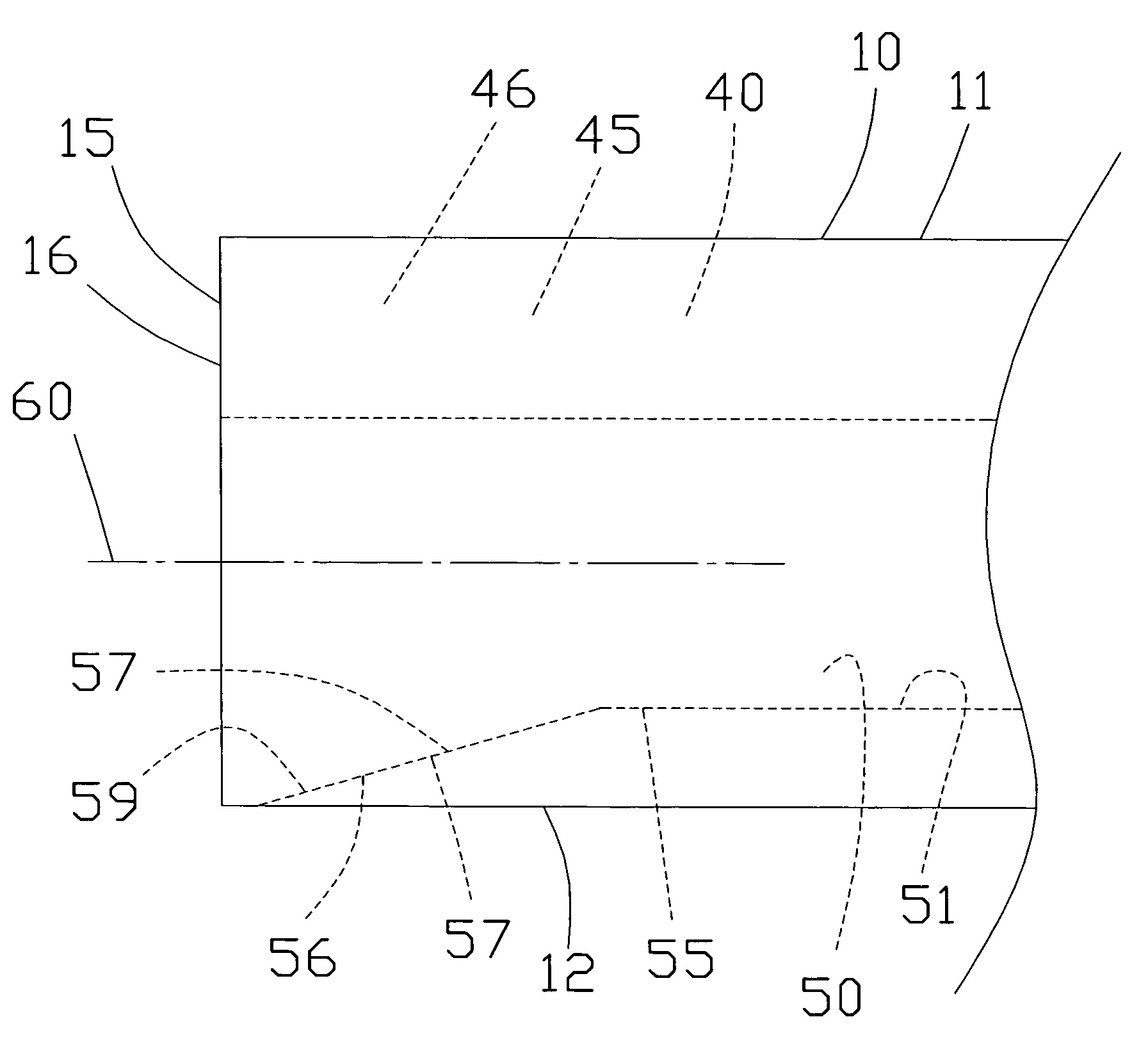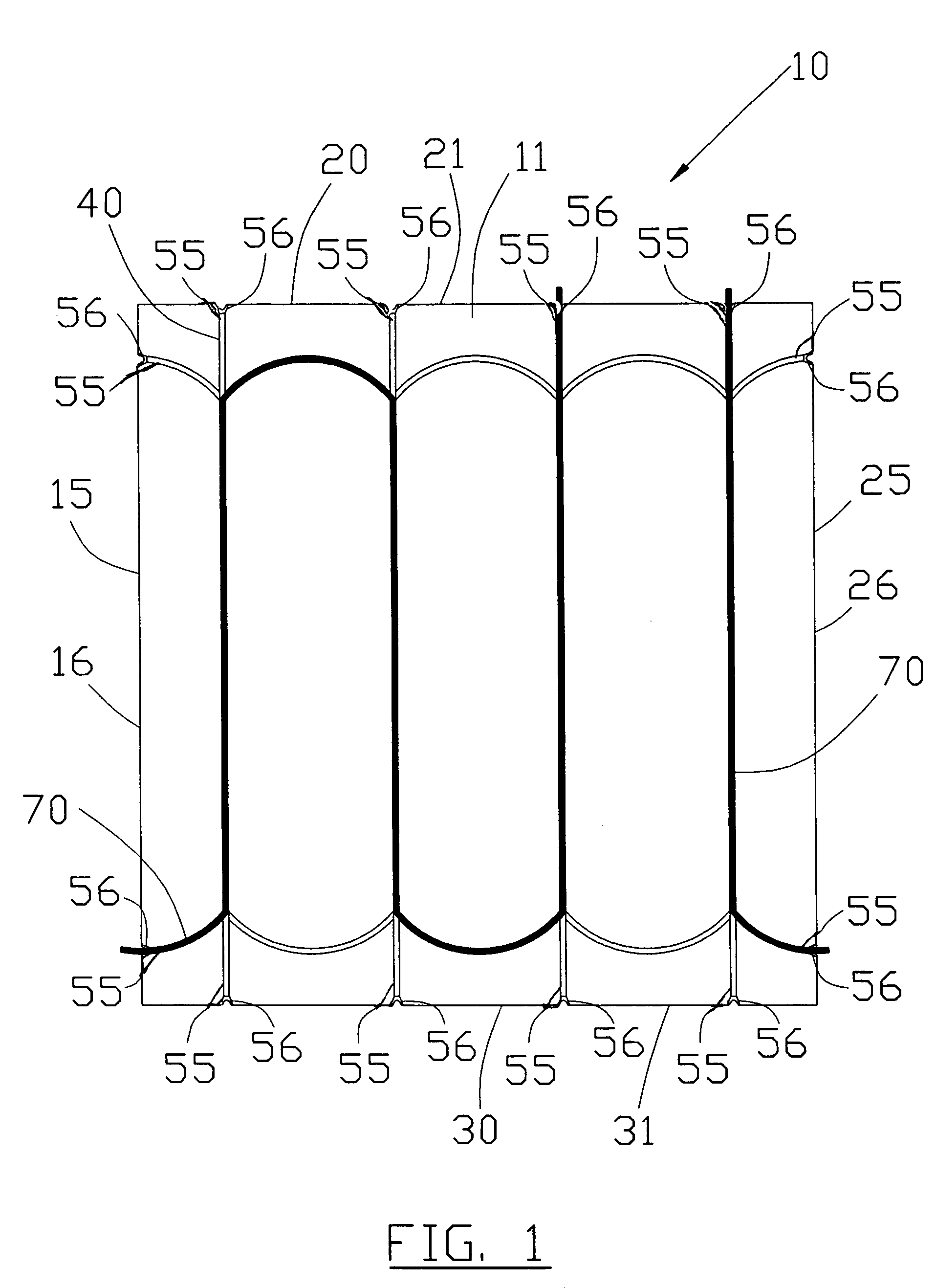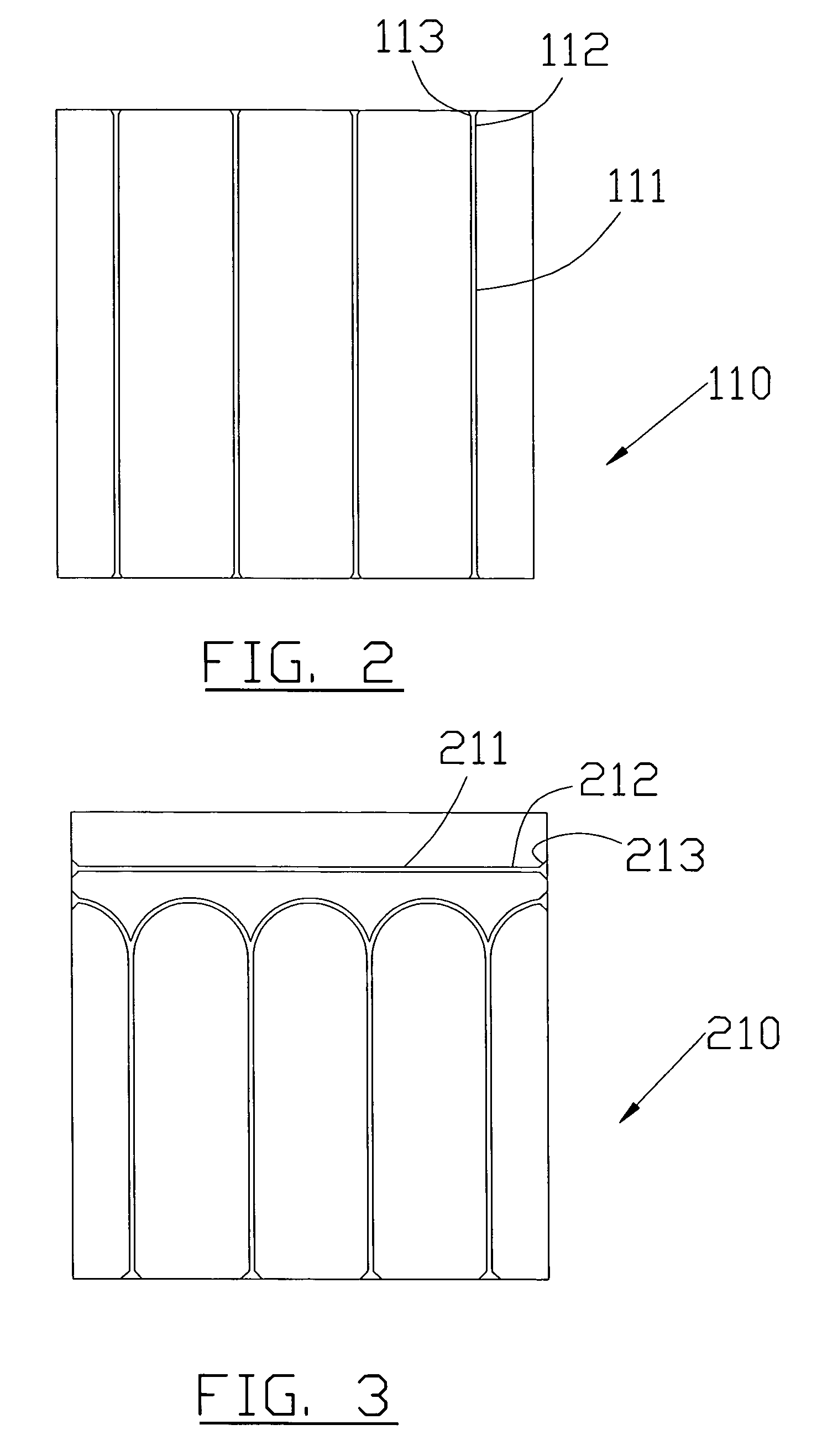Radiant in-floor heating system
a radiant heating and in-floor heating technology, applied in the direction of fluid heaters, heating types, lighting and heating apparatus, etc., can solve the problem of lightweight panels, and achieve the effect of less strict tolerance, easy removal, and reduced installation heigh
- Summary
- Abstract
- Description
- Claims
- Application Information
AI Technical Summary
Benefits of technology
Problems solved by technology
Method used
Image
Examples
Embodiment Construction
[0042]While the invention will be described in connection with several preferred embodiments, it will be understood that it is not intended to limit the invention to those embodiments. On the contrary, it is intended to cover all alternatives, modifications and equivalents as may be included within the spirit and scope of the invention as defined by the appended claims.
[0043]A preferred embodiment of the present invention comprises one or more panels 10 having one or more channels 40 formed therein. Tubing 70 can be inserted in the channels 40. Liquid 80 can be heated and pumped through the tubes 70 with a suitable heat pump.
[0044]Panels 10 are preferably comprised of a wooden board, such as particle board. One desirable quality of particle board is its insulative qualities. It is understood that other materials can be used without departing from the broad aspects of the present invention. Preferred dimensions of the panels are 4 feet in length and width. The panels are low profile ...
PUM
 Login to View More
Login to View More Abstract
Description
Claims
Application Information
 Login to View More
Login to View More - R&D
- Intellectual Property
- Life Sciences
- Materials
- Tech Scout
- Unparalleled Data Quality
- Higher Quality Content
- 60% Fewer Hallucinations
Browse by: Latest US Patents, China's latest patents, Technical Efficacy Thesaurus, Application Domain, Technology Topic, Popular Technical Reports.
© 2025 PatSnap. All rights reserved.Legal|Privacy policy|Modern Slavery Act Transparency Statement|Sitemap|About US| Contact US: help@patsnap.com



